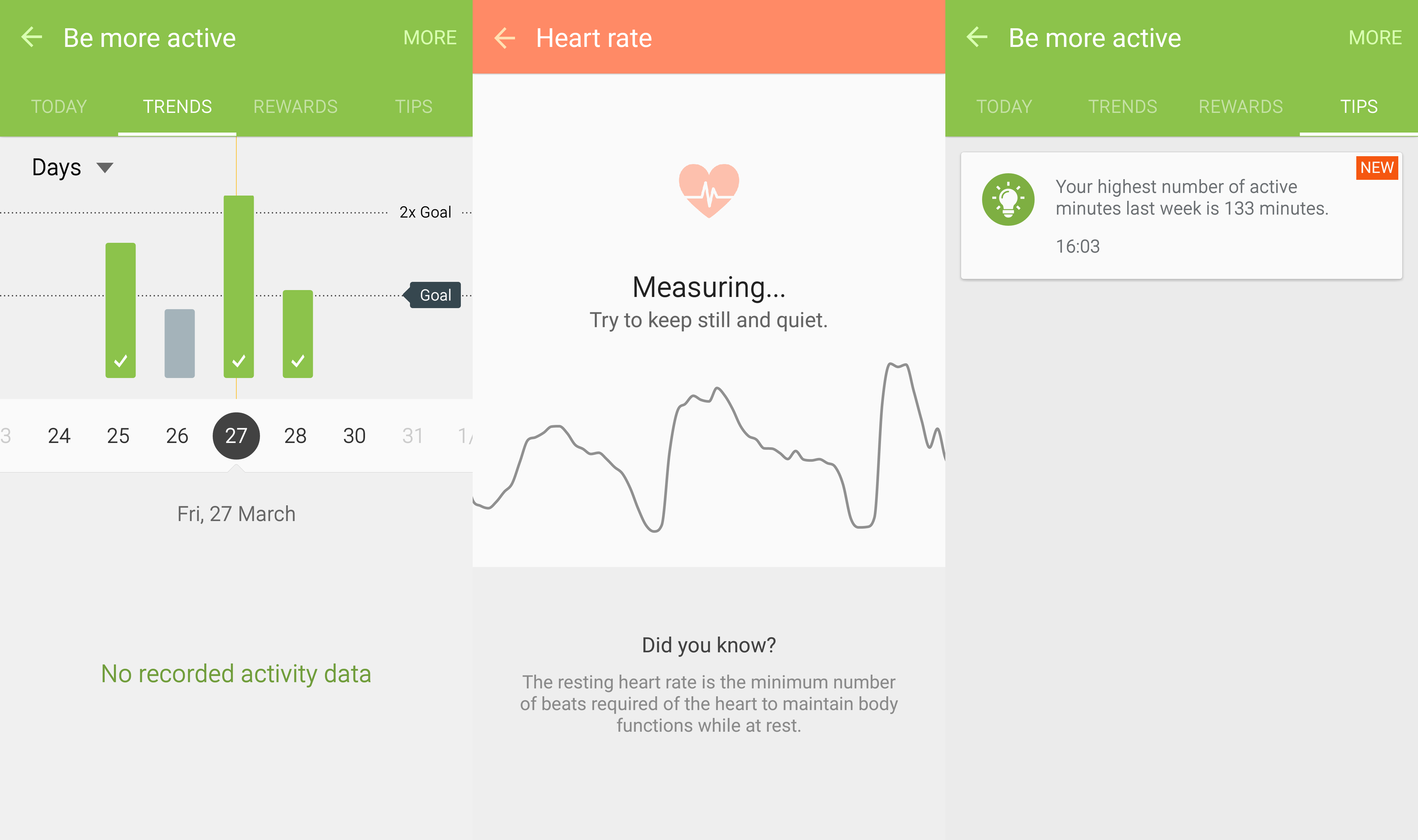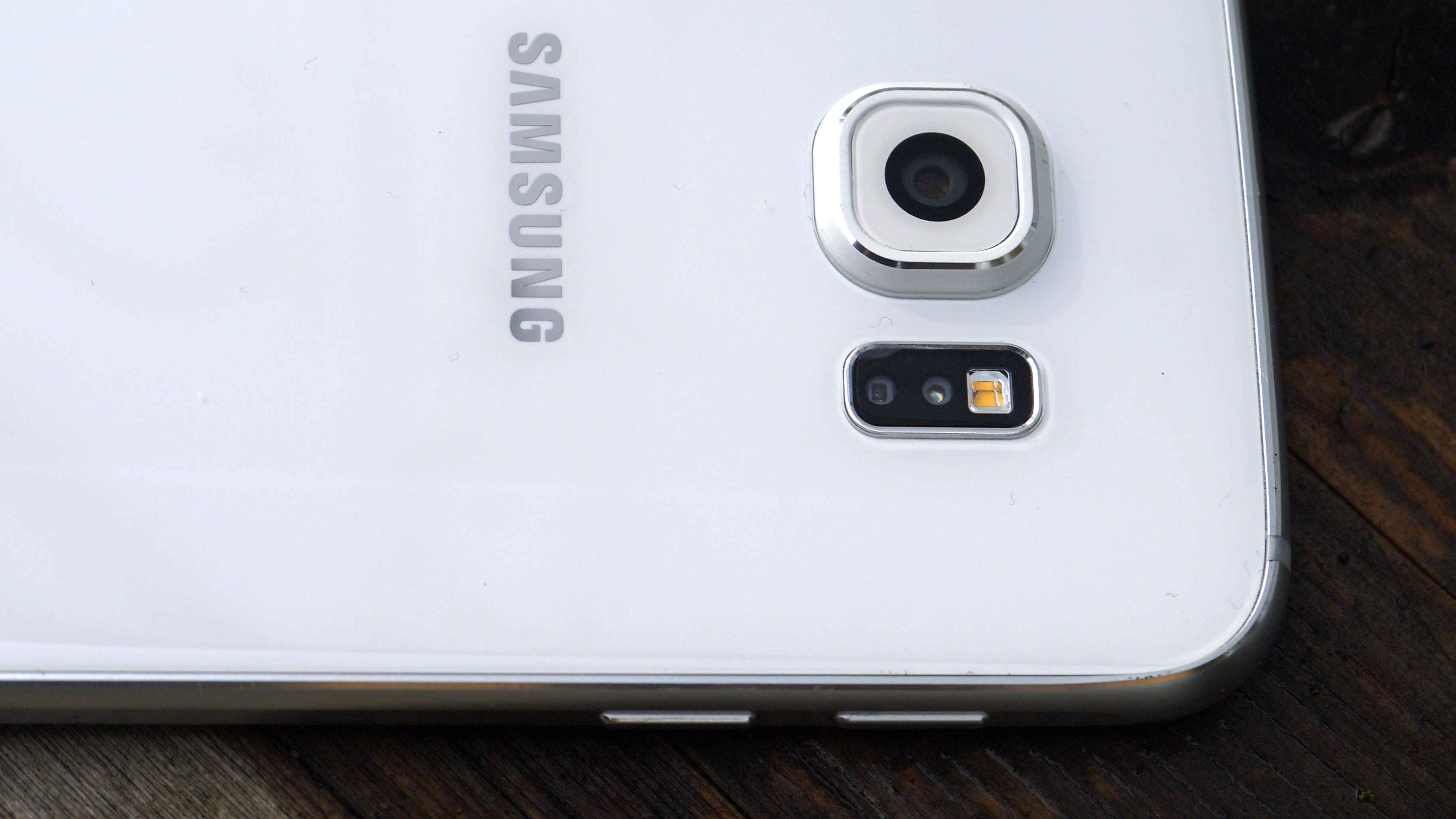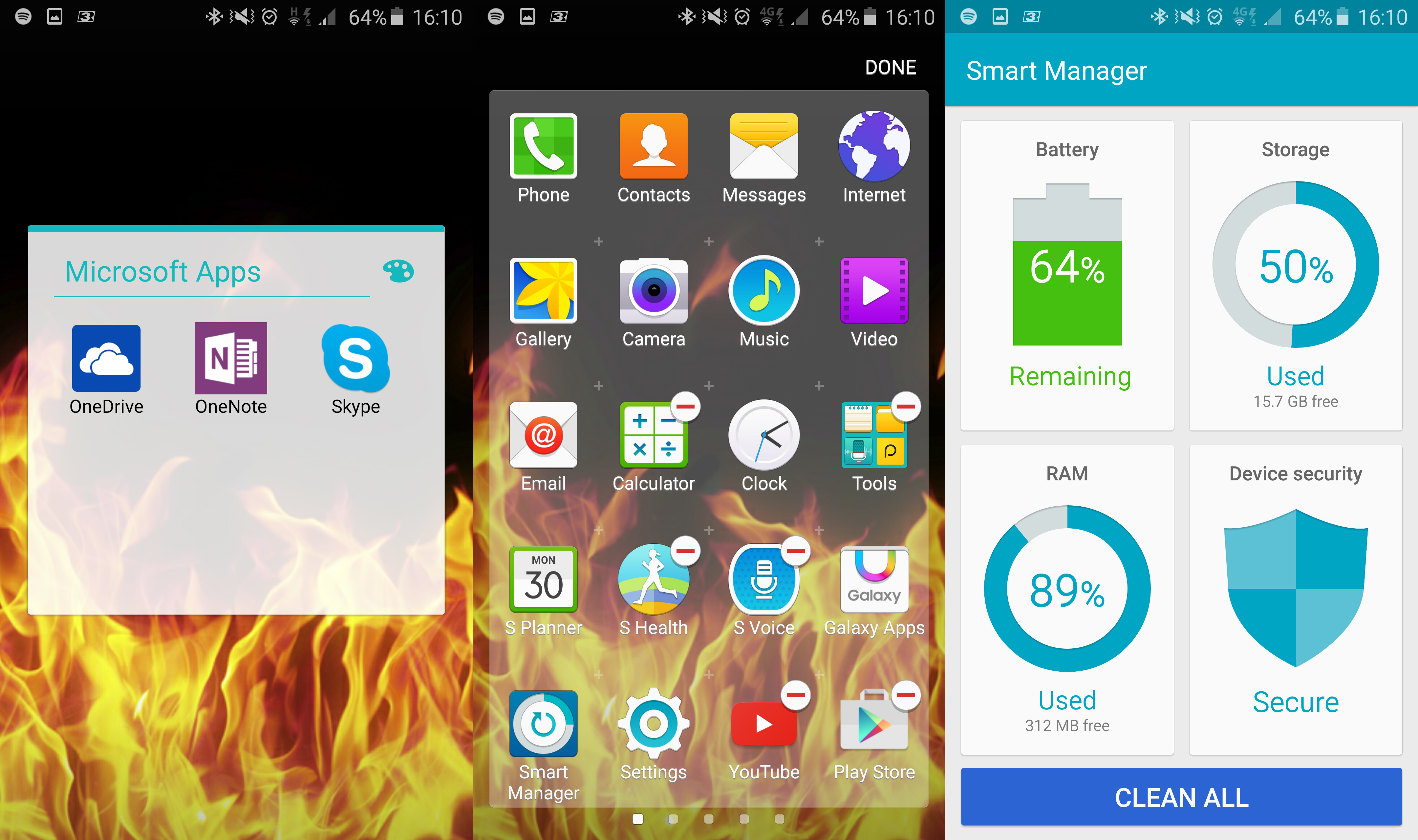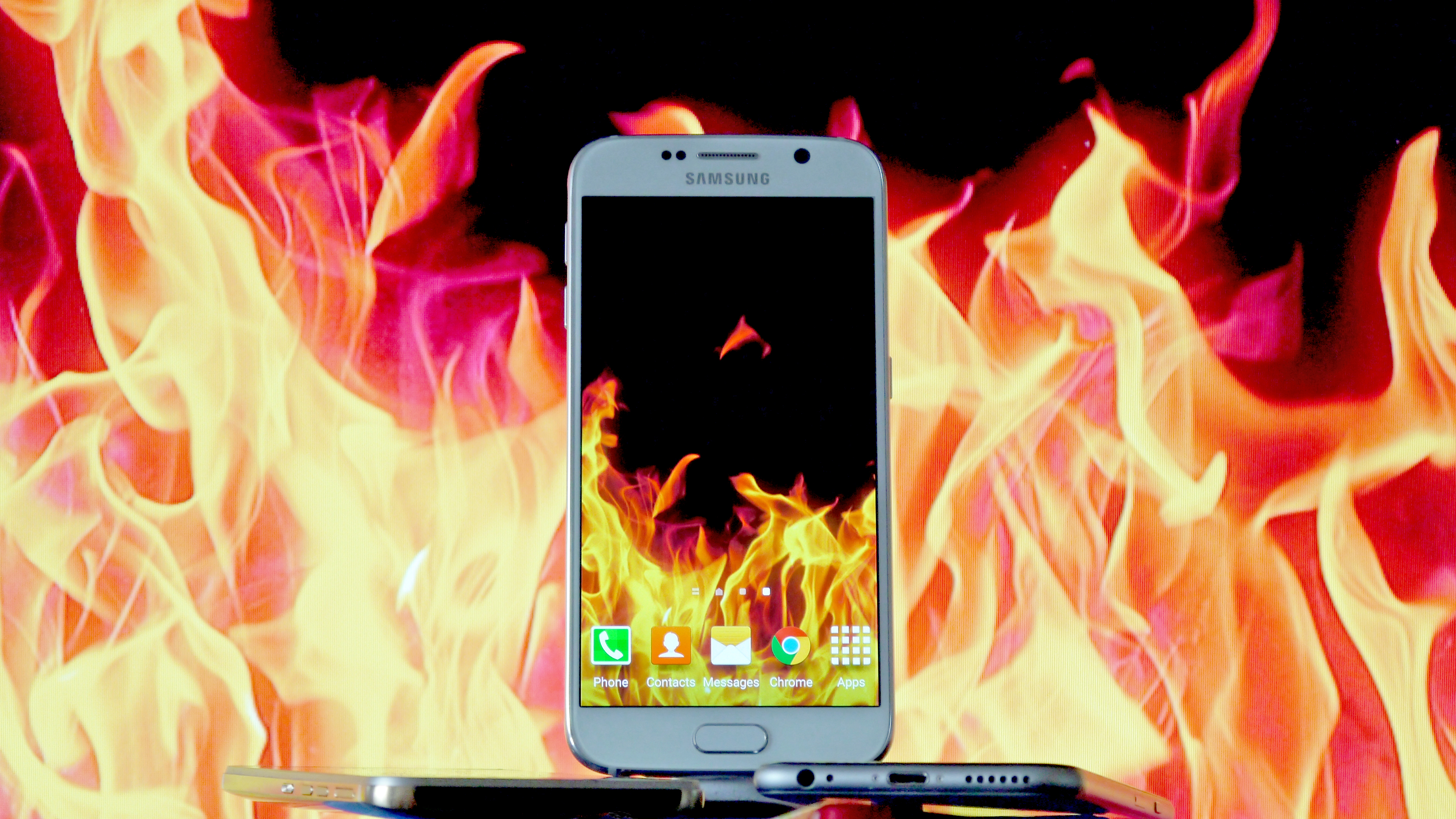Why you can trust TechRadar
There's something perverse in being happy that Samsung has fewer amazing things to talk about on its new phone, but for years I've been forced to talk about nonsensical ideas on the latest Galaxy flagship phone - we'll not go into the Smart Scroll debacle.
This time around, it's all about refinement, making it really easy to do the things you need without having to slap around a thousand menus. And the fancy stuff is kept to a minimum as Samsung finally takes note of what people like and focuses on the basics.
It might sound odd, given I was just saying the gimmickry was reduced, but I'm going to start with the heart rate monitor. It's still as unnecessary as ever, but it's now less prone to failing at least.

I've used it at the end of runs to see my heart rate, but that's not really giving me much useful information unless I can use it at the exact same moment after each workout. When charting your resting pulse it works a lot better, allowing you to see how much fitter you're getting by how hard your heart is working when you wake up.
To that end, it would be great if the S6 could prompt you to take a reading the second you wake up - without that data it all becomes a little moot.
If you do remember though, it's a much more accurate system, and you get to see the heart rate displayed visually too, which is really cool.
Even the oxygen and stress tests work better now - on the Note 4 this was just a car crash of inaccuracy, so while I still have no idea why Samsung is sticking with the heart rate monitor, at least it works well.

The S Health app which eats up all this data is improved too. The interface is so much cleaner, with special place given to heart rate, stress, running etc.
The cleanliness of the interface extends to being able to see the graph of heart rate over time, for instance, with an easy slide across showing the important information.
There's still not a lot of point to this app, of course - and now it's shorn of the life coaching ability, which would give handy hints on how to improve your wellbeing through eating, life goals and more.
It's now just a hub of slightly inaccurate information (a 100 minute run was logged as only 70 minutes according to the app, despite being in motion for the full period).
Fingerprint scanner
The fingerprint on the Samsung Galaxy S6 is excellent - and I didn't think I'd be saying that after the sliding option we had on the Galaxy S5. I was under the impression that Apple had the monopoly on decent scanners, but this changes things.
Like Apple, Samsung employs the single touch way of verifying your print, but after the simple set up the scanner here is amazingly accurate. A light touch will be enough to open the phone, and it rarely fails.
The other benefit is for Samsung Pay as well as using PayPal. The payment system from Samsung, which is promises will fill in all the gaps left by Apple Pay, has yet to fully launch (and won't be in the UK for a while, it seems) and the idea of paying for stuff through PayPal is rather hard to actually use unless you've managed to find anywhere that will actually let you pay using the app.

But it seems like the security side of things here, a situation created by Samsung's retooling of its fingerprint tech, is massively improved, and is a great way to get into your phone.
Smart Manager
Samsung's refined a well-worn app well on the Galaxy S6, allowing you to see all the important stuff in one place. The Smart Manager lets you track security on the phone, the battery life, storage and RAM usage. A quick tap will 'clean' all of these, but it doesn't do a huge amount.
For instance, you're only going to need to clean up storage once in a while, with unused app info being deleted, and the RAM usage is still something that I'm not sure how it works.
If you clear the RAM, the phone doesn't speed up or slow down much, and it seems that it could be affecting apps with opening and shutting. Battery usage is easy to work out, but I've not seen anything happening from asking the phone to 'clean up' this area.
It's a nice app to have in one place, and when you do need to have a look through stuff it's a very good option to have, but I was hoping for more for this idea from Samsung.
Double wireless
This could be a big one: Samsung's packed both versions of wireless charging into the thin frame of the Galaxy S6. When you see how much heft that usually adds to a phone to have ONE standard on there, having both the PMA and QI on the phone is amazing.
It shouldn't be this way, with a brand having to pack two competing technologies in one place. We need a single, unified, standard for wireless charging, but whatever the landscape Samsung is ready to service it.
I tested the S6 on the Tylt stand, which promises to let you chuck the phone down any which way and get it charging wirelessly, and for the most part it's right. I also tried the Fonesalesman's QiStone+ Wireless charger, which is a battery pack as well for wireless charging on the go - it's good, but unless you're in a very still area it's very easy to make it slide off the pad.
Even the official wireless puck from Samsung, with a rubber ring to hold the phone in place, doesn't quite grip it well enough thanks to the protruding camera on the back. Were this phone flat, it wouldn't be as much of an issue, but it's a slider.
The wireless charging on the Tylt stand was very quick, similar to what I'd expect on a normal charger. This was impressive given the input was only 0.75 amps, which is much less than the phone can handle. However, the phone does heat up rather significantly on all the wireless pads, so it's worth keeping an eye on that if you're keeping in your bag near some sandwiches.
Microsoft's on board
A lot's been made of the fact that Samsung has bundled the Microsoft suite of apps onto its phones this year, but in reality it's not something to get that bothered about.
The only really cool addition is OneNote, which is a good alternative to Evernote (which was previously placed on Samsung phones). It allows you to create notes, lists and mini documents on the fly in an easy to use interface, and is a good addition.

The other Microsoft apps added in are Skype and OneDrive - not really the full suite I was expecting. The former is on many new phones now - including the One M9 - and is easily downloaded anyway.
What's more annoying is that the app pops up every so often on the battery screen, sipping a little bit of power, even when not used. OneDrive is cool in that it gives you 100GB of storage space, but I'd rather Samsung had partnered with Google in the same way as HTC to give that space on Google Drive.
You can see that Samsung knows Google Drive is the bigger hitter, as you can link your phone's file manager system to Drive with one tap, with the same option nowhere to be seen for Microsoft.
Apps disabled
That said about Microsoft, you can get rid of most of it if you fancy anyway. While Samsung's not chucked as much bloatware onto the Galaxy S6 as normal, there are still a fair few apps that come out of the box.
The good news is these can now be uninstalled with a simple tap - even the Google Play Store for some reason. Don't get rid of that though, as it will make getting new apps on there really rather difficult.
It doesn't seem that these apps are really uninstalled, merely disabled and hidden from view, but given the capacious storage on offer from 32GB to 128GB, it's essentially the same thing for most users.
Current page: Super charging and an amazing fingerprint scanner
Prev Page Introduction, design and display Next Page Interface and performance
Gareth has been part of the consumer technology world in a career spanning three decades. He started life as a staff writer on the fledgling TechRadar, and has grew with the site (primarily as phones, tablets and wearables editor) until becoming Global Editor in Chief in 2018. Gareth has written over 4,000 articles for TechRadar, has contributed expert insight to a number of other publications, chaired panels on zeitgeist technologies, presented at the Gadget Show Live as well as representing the brand on TV and radio for multiple channels including Sky, BBC, ITV and Al-Jazeera. Passionate about fitness, he can bore anyone rigid about stress management, sleep tracking, heart rate variance as well as bemoaning something about the latest iPhone, Galaxy or OLED TV.
